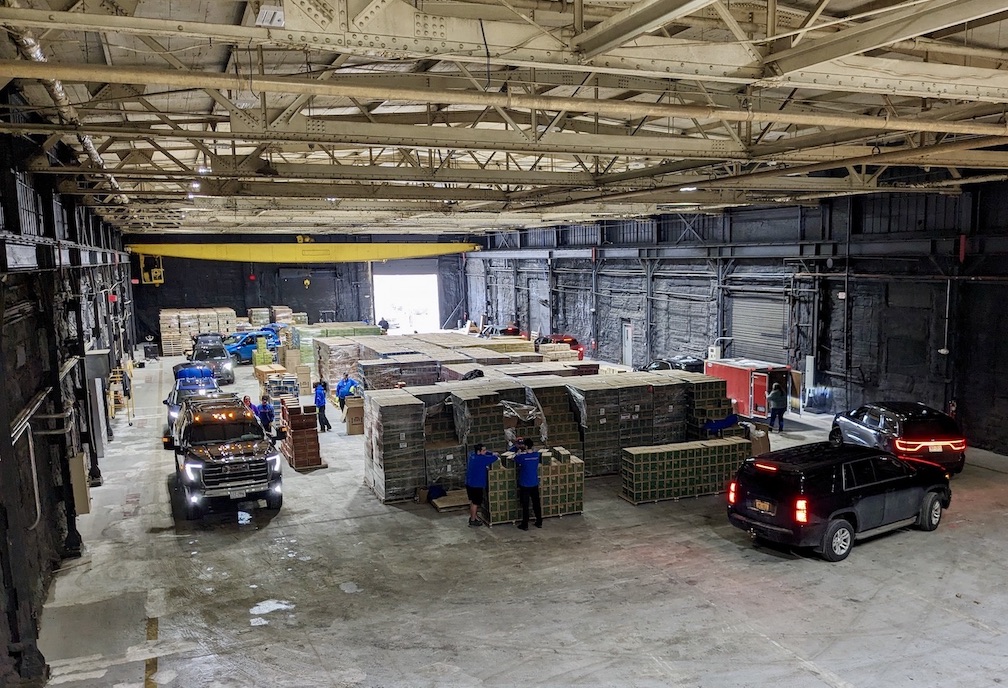Featured News - Current News - Archived News - News Categories
Remedial plan to address ‘balance of plant’ at Pletcher Road site
By Terry Duffy
Editor-in-Chief
The U.S. Amy Corps of Engineers, Buffalo District, reports the public comment period is now underway on the plans to what is referred to as the alternative 3 “balance of plant” remediation at the Niagara Falls Storage Site in Lewiston.
Announced in March 2019, the balance of plant corrective measures at NFSS follows on the Corps’ earlier decision to completely remove the roughly 10-acre IWCS radioactive containment cell, process the contaminated materials and ship all the materials out of state for permanent disposal. The IWCS is located within the NFSS facility on Pletcher Road, roughly 1 mile east of the Lewiston-Porter School District’s Creek Road campus.
As reported in a Sentinel article Dec. 12, 2015, under the Army Corp’s exhaustive alternative 4 plan revealed at that time for the IWCS, all radioactive materials inside the would be excavated and disposed of off-site. Corps reps noted the IWCS, when first constructed in the late 1980s, was divided into subunits A, B and C.
•Subunit A containing 28,440 cubic yards of wastes, is where the highest percentage of radio- activity – 98% – is found. This includes K-65, L-30, L-50 and F-32 residues – wastes placed within the confines and basements of former buildings 411, 413 and 414 at NFSS, now demolished. Also found in the subunit are assorted contaminated materials, including soils and building rubble and debris from the demolished structures on the NFSS. Subunit A is found in the central and south-south- west portions of the IWCS cell.
•Subunits B and C, found in the middle and northern sections of the IWCS, contain assorted rubble and debris associated with K-65 waste handling, demolished building structures, contaminated ore-processing residual materials, and lower-volume contaminated soils. The estimated total volume of both units is 249,632 cubic yards, yet the actual percentage of radioactivity is just 2%.
John Busse, who served as LOOW site project manager at the time, said the cleanup process would involve a complete encapsulation of the IWCS cell and the use of robotics to open it up and remove the subunit A materials.
Lower level wastes in subunits B and C at the IWCS would be handled using standard Formerly Utilized Sites Remedial Action Program protocols and equipment, similar to that used earlier at a Corps cleanup at a Linde facility in Tonawanda, Busse said.
No human contact would be involved within the encapsulated unit whatsoever, and the entire IWCS would have safeguards to protect the community with regard to air monitoring and release.
At this writing, the project remains subject to federal government funding appropriations from Congress.
Returning to the Corps’ article 3 balance of plan announcement, Arleen K. Kreusch, APR, outreach program specialist for the Corps Buffalo District, said, “Since then we’ve actively pursued the development of the remedial design contract to remediate the (NFSS) site. We expect to award this design contract in 2021 and our efforts have not been delayed or impacted by the ongoing COVID-19 pandemic.”
She said the Corps has been proceeding over past months on the decision-making process for contamination located on the NFSS, but outside of the IWCS to arrive at what is referred to as alternative 3.
“Release of this proposed plan is a significant step forward. This plan proposes a remedy for addressing contaminated soils, buildings and building foundations, utilities, roads and roadbeds known as the balance of plant OU, and contaminated groundwater known as the Groundwater OU,” Kreusch said.
She explained that, under the Corps’ preferred method, “Under alternative 3, impacted soil, road bedding and groundwater are removed; the foundation and utilities of former Building 401 are removed, and Building 433 and the foundations of former Buildings 430 and 431/432 are decontaminated by scarifying (mechanically grinding the surface) and left in place.
“FUSRAP-related material that is removed will be transported off-site for disposal at an appropriately permitted disposal facility. Following implementation of alternative 3, the site would be remediated to levels suitable for industrial use (i.e., protective of both construction and industrial workers). Five-year reviews will be conducted to ensure continued protectiveness of the remedy.”
The Corps public comment period began Oct. 5 and continues to Dec. 5. In the meantime, the Corps will hold a virtual public hearing at 7 p.m. Wednesday, Oct. 21, to present the plan to the public. Due to space limitations, those interested in participating are requested to register with the Corps by Oct. 19 via email at [email protected].
The proposed plan is available for review at https://www.lrb.usace.army.mil/Missions/HTRW/FUSRAP/Niagara-Falls-Storage-Site/. The Corps is now accepting public comments on the plan.
For further information, respond to the Corps via the above email or call 800-833-6390.





























